How to benefit from the boom in beauty
New sales techniques, online influencers and structural trends such as growing consumption in emerging markets all bode well for the beauty industry, says Stephen Connolly.
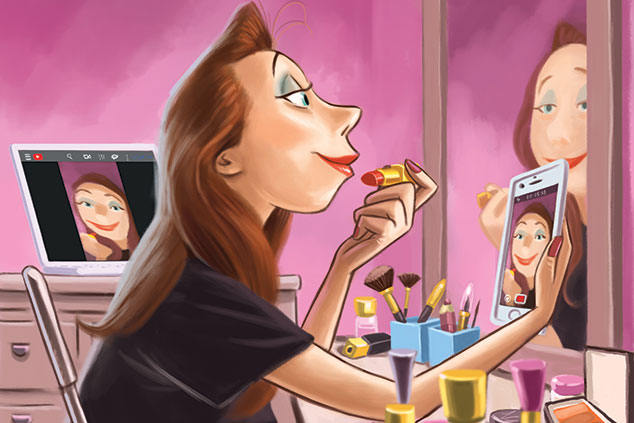
Investors often wonder where the next "unicorn" a privately held start-up valued at more than a billion US dollars could come from. They might expect it to emerge in sectors such as finance, space travel, or cybersecurity, or anywhere companies are radically changing how we do things. They certainly wouldn't expect it to emerge from a tiny operation in California with just a handful of staff flogging lipstick online at $29 a pop.
But according to US business magazine Forbes, Kylie Cosmetics has been so successful that its valuation has soared from zero to nearly $1bn in the three years since its inception. Founder, 100%-owner and now make-up mogul Kylie Jenner, a scion of the Kardashian-Jenner family featured in the long-running US reality cable TV show Keeping Up With The Kardashians, has become the world's youngest billionaire at 21, elbowing aside Facebook's founder Mark Zuckerberg. He didn't reach the $1bn mark until he was 23.
Making a mint out of make-up
Forbes's announcement quickly drew criticism from those who put Jenner's success down to her family's celebrity status. There's no doubt this has been key to reaching her market: she now has 129 million followers on the photo-sharing site Instagram, more than musicians Beyonc, Taylor Swift and Justin Bieber and far more than top-20 global brands such as Nike, Disney and BMW. Powerful though this personal online celebrity following is, however, it alone doesn't explain why the cosmetics industry has been on such a tear over recent years. She's not the only one making a mint out of make-up.
MoneyWeek
Subscribe to MoneyWeek today and get your first six magazine issues absolutely FREE

Sign up to Money Morning
Don't miss the latest investment and personal finances news, market analysis, plus money-saving tips with our free twice-daily newsletter
Don't miss the latest investment and personal finances news, market analysis, plus money-saving tips with our free twice-daily newsletter
Take Pat McGrath. She has less than 2% of the number of Jenner's Instagram followers yet her start-up, which she launched around the same time as Kylie Cosmetics, hit the $1bn mark even faster. A former receptionist from Northampton, this British success story worked her way up, with no formal training, to become a major name in the international, top-league fashion scene. She has been associated with major labels, including Giorgio Armani, Prada and Dolce & Gabbana, and deemed "the most influential make-up artist in the world" by Vogue's legendary editor-in-chief Anna Wintour.
Other big names in this field include Anastasia Soare, known as the "eyebrow queen"; her brand is valued at around $3bn, according to the Financial Times. Then there is Jamie Kern Lima, a former Big Brother contestant who sold her It Cosmetics label for $1.2bn to cosmetics powerhouse L'Oral. Charlotte Tilbury is another British name well on the way to being worth $1bn.
Harnessing new retail trends
All of them are achieving supercharged success using, to differing degrees, internet promotion and the increasingly popular ploy of offering people "experiences" rather than just purchases. These include interacting with consumers online in real time. Customer and celebrity endorsements are also key, as is the trend of "influencing" by bloggers on social media around the world who have loyal and aspiring audiences. These entrepreneurs are at the forefront of modern approaches to retail sales and marketing, while other sectors struggle to maintain high-street relevance and adapt their business models or web "shopfronts" to bolster interest, sales or footfall.
Structural shifts bode well for beauty
While beauty start-ups have impressed investors in recent years, their growth has not been in isolation. It has been part of a positive and broad-based performance across the industry as a whole, right up to the global cosmetics giants such as Este Lauder and L'Oral.
Any industry demonstrating a sound grip on the changing nature of its marketplace while delivering good returns should be on the investment radar. But there are also structural trends underpinning long-term growth in the beauty sector. One is the emergence of more affluent middle-class consumers in emerging markets. There should be years of growth ahead: Asia ex-Japan, despite being the world's largest cosmetics market by value, lags well behind the West in consumption per capita. In China in particular there is growing interest in colour cosmetics, while skincare sales have traditionally been strong.
Broader global access to the internet and media entertainment is exporting more Western styles of beauty, along with consumers' demand for "experiences", into largely untapped markets. At the same time, being online constantly through social media and the "selfie" is a recurring theme worldwide. It is spreading a perceived need always to "look good" at very short notice, in turn stimulating interest in beauty and cosmetics among ever-younger consumers.
The world has changed permanently. As Fabrizio Freda, CEO of Este Lauder, has said, "today, a 30-year-old is photographed more times in a day than their mother was in a year, so they care about what their skin looks like now, not when they are 40".
A booming market
The fact that against this positive background start-up entrepreneurs can enter with often limited financial resources and create billion-dollar-plus enterprises suggests investors should take a closer look. Venture capitalists would seem to think so: according to PitchBook, a financial-data provider, the amount invested in this field last year set a new record high, reinforcing the upbeat growth prospects for the industry as a whole.
Beauty is currently reckoned to be worth around $550bn and expected to reach some $750bn by 2024, building on the good returns achieved in recent years. Over the past 12 months, for example, shares in Este Lauder, the $59bn group focused on cosmetics manufacturing and distribution globally, have returned four times more than America's S&P 500 index. And over five years they have delivered 20% annually, while sales and profits have both risen by nearly 35%. Its extensive brand portfolio includes Clinique, Bobbi Brown, Tom Ford and Ermenegildo Zegna. L'Oral, which is valued at around $150bn and owns labels such as Lancme, Giorgio Armani and Yves Saint-Laurent, has seen its shares gain 16% annually over five years.
Paying up for premium beauty products
For the leaders, the biggest sales contributors across the industry have tended to be skincare products and then make-up. The latter is expected to dominate growth over coming years. It has the biggest concentration of "premium", or top-branded, expensive products with big, dependable margins relative to more standard, mass retail offerings, and it has been a consistent part of the sector's recent growth.
Consumers demand and will "pay up" for "premium", thanks to a mixture of strong branding, an optimism that higher cost means greater effectiveness, and one of the key raisons d'tre of beauty products being something worth paying for: "hope in a bottle", as some bluntly put it. Furthermore, growth in "premium" is expected significantly to outperform products aimed at mass-market consumers.
At the same time, beauty has recently benefited from, and its future relies upon, the sector's traditional strengths, such as adept management and exploitation of marketing and distribution channels. Beauty to a degree stands out as a rare ray of sunshine in an unrelentingly gloomy retail environment in many countries, defying warnings of declining footfall and "Amazon-isation" elsewhere. E-commerce is certainly growing, but so, too, are sales through the new wave of dedicated make-up "experience" stores, which are proliferating, although the mix is still evolving. In the beauty sector, for now at least, internet and physical sales are not locked in a tug-of-war, but are complementing each other. It's no coincidence that more health and beauty stores opened in western Europe in 2017 than any other type of retail outlet.
Retail and online offerings are complementary
LVMH's Sephora chain is a good upmarket experience-store example alongside the more mid-market Ulta Beauty, which is now the biggest US beauty retailer. What they offer is a place to go to try a good range of beauty products, have fun and have your make-up done for you, learn and apply tips, and try different profiles (increasingly including digitally) so a shopper can find the perfect look. They are extremely popular.
Ulta Beauty, which markets itself as "All Things Beauty. All in One Place", reported annual results a week or so ago showing like-for-like sales up 8.1% slightly more than a third of which came from e-commerce and the rest in stores and if you add sales from shops opened during the year (many more are planned), the rise was 14.1% to an overall $6.7bn, with net income up 18.6%.
Companies such as Sephora and Ulta Beauty also sell online. It's not unreasonable to believe satisfied customers will go back to the same store or adviser for further consultations, using the website for restocking between visits. Beauty specialists work hard on customer relations through promotions, offers and rewards. Moreover, trust in the beauty sector is important people don't want to blemish their skin or hurt their eyes, for example, with untried products from unknown sources.
As another example of retail and online successfully working together, there is a symbiotic relationship between stores such as Ulta Beauty and emerging new brands. As Ulta Beauty adopts them, it becomes a "home" to the latest trends and brands, boosting their appeal to consumers keen to be cool. Ulta Beauty also gives the new brand the chance to move beyond internet sales into a ready-made physical retail market.
Influencers: pricey but worth it
Increasingly key throughout much of this is the "influencer". Influencers are a diverse range of people who have developed strong followings on social media. It could be for their opinions, their testing of goods, or their make-up and styling tips. Their viewers identify with them and trust them. The FT has cited a report that shows influencers have overtaken magazines as consumers' primary source of advice on what to buy. Influencers' pay varies widely.
The BBC reports that a blogger with 30,000 followers can earn £750 for a beauty post. Those with a million followers are said to earn £10,000 for a post. And Kylie Jenner, for fashion posts, is apparently likely to get £750,000 a time. Big money, but it's effective marketing, and the right set-up can create a run on a new product and lead to a sell-out in minutes.
Something that should not be overlooked in all the excitement of reaching customers in new ways is that they can reach back. Dissatisfaction with anything from a product all the way up to a multinational's decisions concerning, say, an environmental or ethical issue, can have a dramatic negative impact that can seriously damage a brand and sales. Investors rely on companies to get the balance right. And in terms of products, businesses will have to contend with increasing feedback about what consumers want. They may demand natural ingredients, or expect corporations to become activists for ethical or health values (such as supporting cancer research or sustainability initiatives, for instance). They may also protest against being segmented by age, skin colour, or body type. All these issues have caused headaches for companies' public-relations departments in the past, yet they are becoming ever more pertinent in consumer markets.
Nonetheless, beauty remains a fast-moving industry with great potential. While the new beauty billionaires create headlines, it's impossible to say how sustainable their businesses will turn out to be. Focusing on large companies in cosmetics provides a good geographic spread, along with the diversity that comes with a "portfolio" of brands. The greatest growth is likely to stem from the "premium" areas. And strong, world-class labels should add a defensive quality and be dependable over the long term. Below we look at some stocks that give exposure to the future of beauty.
Where to put your money now
The first three stocks below capture many of the key themes in this sector: globally diverse revenue, strong brands, successful online sales and "experience" shopping formats.
The first to consider is one of the biggest beauty companies, Este Lauder (NYSE: EL). It has been performing well, as has the stock, thanks in particular to China and emerging markets, and it has exceeded analysts' expectations. Its strong brand portfolio with high "premium" content makes it a solid choice for long-term exposure. Management has been guiding shareholders' expectations upwards recently. It's a top-quality company with a winning and well-executed strategy.
LVMH (Paris: MC), the Paris-based $180bn conglomerate, provides exposure to the quality beauty sector, but within a more broadly based luxury goods group. It owns the Sephora "experience" stores, and has a strong line-up of brands from Louis Vuitton fashion to Mot & Chandon champagne, along with Givenchy, Guerlain, Kenzo and Marc Jacobs. Led by long-standing boss Bernard Arnault, last year's trading generated record results with profits up 20%. It is another well-managed business well placed to continue delivering market-beating returns.
On a smaller scale is $20bn Ulta Beauty (Nasdaq: ULTA). The latest impressive results are highlighted in the main story above. With 1,100 stores, it is among those leading the way in successful, modern beauty retailing. It's more mid-market than Sephora and has a younger customer base that responds positively to the stores' format. Each one includes a beauty salon. It's also the route to market for new beauty brands that have established themselves online Kylie Jenner's Kylie Cosmetics, for example, now distributes through Ultra Beauty, and so it's a way for investors to gain from surprise overnight successes from small, unlisted entrants.
Each of the above can be held as standalone investments, although some may wish to consider splitting their money and buying some shares in each to spread their exposure to the sector themes.
Those looking for more of a punt could take a look at Warpaint (Aim: W7L). Valued at around £75m, it mostly distributes its own W7 beauty products. It had been getting favourable coverage until late last year when it issued a profits warning. Although its overseas operations were doing well, retail conditions had been softening. It has bought a US distributor to help its sales push over there, but despite experienced management it is hard to predict how prolonged and deep the UK difficulties will be. It remains profitable overall. This could be a long wait, but ultimately a rewarding investment if and when it recovers: directors have bought large amounts of stock since the earnings warning.
Finally, for those who like to invest via funds, there is little focused specifically on beauty, but a broader luxury-brands fund is a way in. Asset management group GAM has a Luxury Brands Equity fund denominated in sterling.Este Lauder, L'Oral and LVMH are among the top-five holdings and represent 19% of the fund. The fund's mandate is to generate capital growth from top brands worldwide and it has an ongoing charge of 1.25%.
Get the latest financial news, insights and expert analysis from our award-winning MoneyWeek team, to help you understand what really matters when it comes to your finances.
Stephen Connolly is the managing director of consultancy Plain Money. He has worked in investment banking and asset management for over 30 years and writes on business and finance topics.
-
 The shape of yields to come
The shape of yields to comeCentral banks are likely to buy up short-term bonds to keep debt costs down for governments
-
 The sad decline of investment clubs – and what comes next
The sad decline of investment clubs – and what comes nextOpinion Financial regulation and rising costs are killing off investment clubs that once used to be an enjoyable hobby, says David Prosser
-
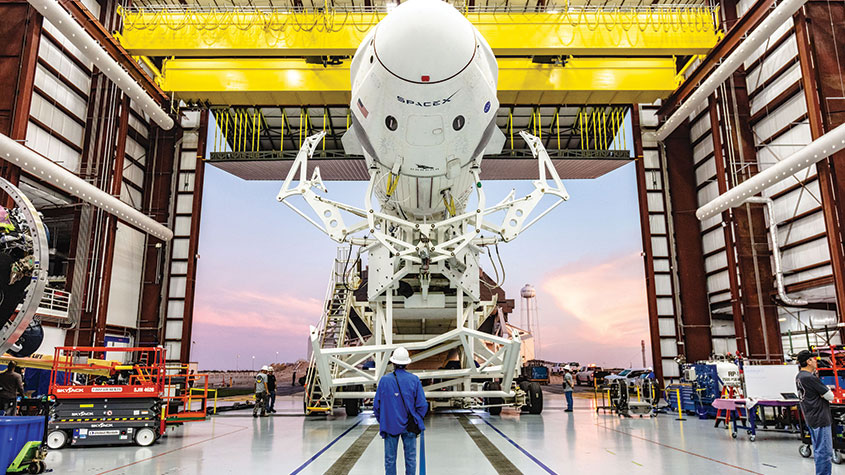 Invest in space: the final frontier for investors
Invest in space: the final frontier for investorsCover Story Matthew Partridge takes a look at how to invest in space, and explores the top stocks to buy to build exposure to this rapidly expanding sector.
-
 Invest in Brazil as the country gets set for growth
Invest in Brazil as the country gets set for growthCover Story It’s time to invest in Brazil as the economic powerhouse looks set to profit from the two key trends of the next 20 years: the global energy transition and population growth, says James McKeigue.
-
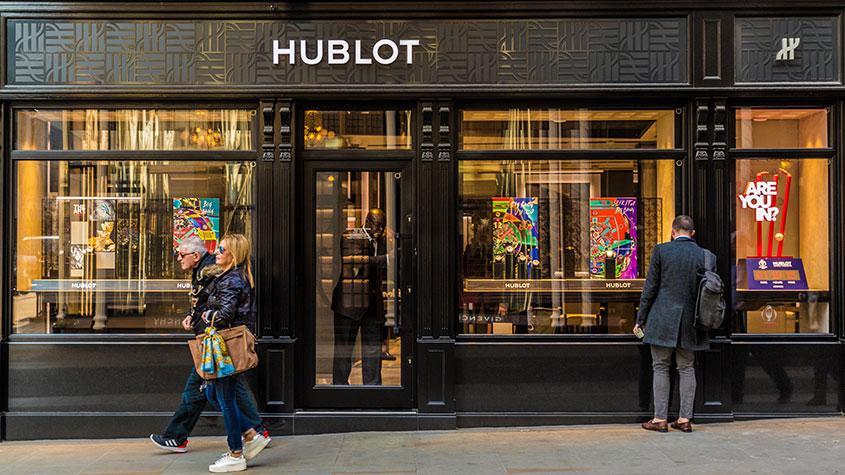 5 of the world’s best stocks
5 of the world’s best stocksCover Story Here are five of the world’s best stocks according to Rupert Hargreaves. He believes all of these businesses have unique advantages that will help them grow.
-
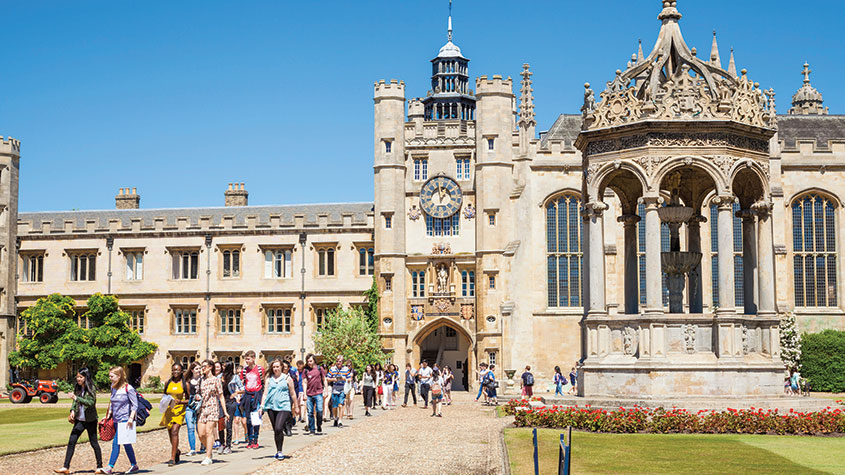 The best British tech stocks from a thriving sector
The best British tech stocks from a thriving sectorCover Story Move over, Silicon Valley. Over the past two decades the UK has become one of the main global hubs for tech start-ups. Matthew Partridge explains why, and highlights the most promising investments.
-
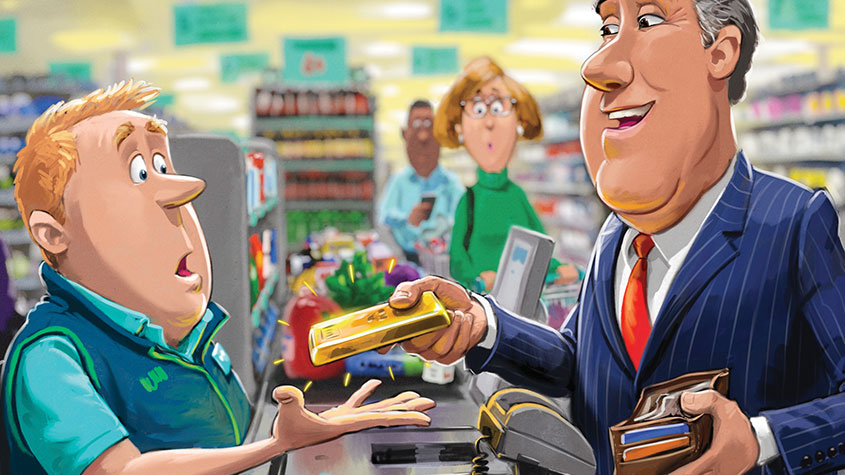 Could gold be the basis for a new global currency?
Could gold be the basis for a new global currency?Cover Story Gold has always been the most reliable form of money. Now collaboration between China and Russia could lead to a new gold-backed means of exchange – giving prices a big boost, says Dominic Frisby
-
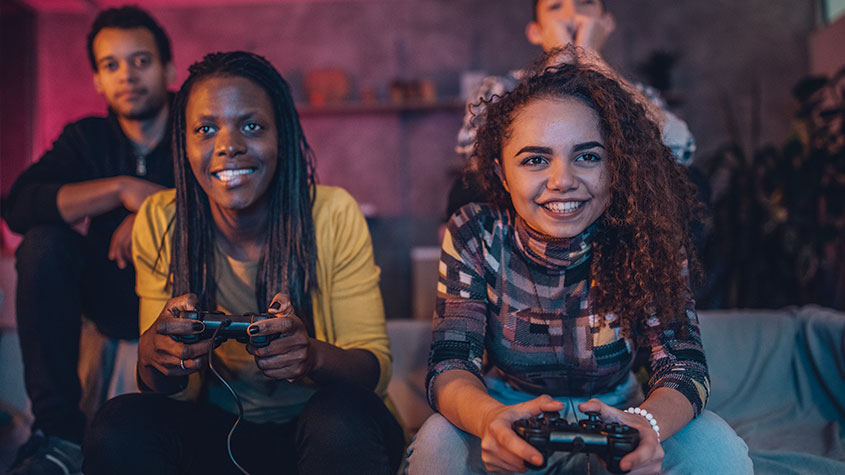 How to invest in videogames – a Great British success story
How to invest in videogames – a Great British success storyCover Story The pandemic gave the videogame sector a big boost, and that strong growth will endure. Bruce Packard provides an overview of the global outlook and assesses the four key UK-listed gaming firms.
-
 How to invest in smart factories as the “fourth industrial revolution” arrives
How to invest in smart factories as the “fourth industrial revolution” arrivesCover Story Exciting new technologies and trends are coming together to change the face of manufacturing. Matthew Partridge looks at the companies that will drive the fourth industrial revolution.
-
 Why now is a good time to buy diamond miners
Why now is a good time to buy diamond minersCover Story Demand for the gems is set to outstrip supply, making it a good time to buy miners, says David J. Stevenson.